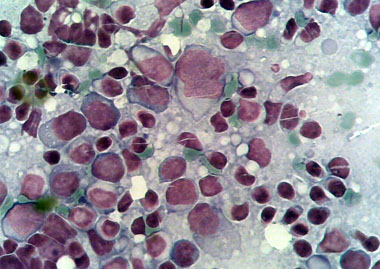
TCM Perspective On
Infectious MononucleosisIn traditional
Chinese medicine, this disease belongs to the category of febrile diseases, manifested as fever, red and swollen throat, scrofula, etc. Taking Astragulus for treatment of mono as a tea or as a tincture is your best bet for quick recovery. It’s sometimes offered in capsule form but the freshness can be an issue. It also difficult to reasonably expect a person with a sore throat to take a capsule. Stick with liquids if you can. For the sore throat, drink Ginger tea. The absolute best throat soothing remedy is grated ginger and turmeric roots in a pot of water, covered and boiled for a minute or two. Let the liquid sit until it is cool enough to drink then strain it and serve it up. If the patient is up to it, let her breath the steam in as is cooling through her mouth and out her nose. If your patient craves ginger ale, it’s the ginger not the sweet part she or he wants. Some ginger ales that are healthier than others. Look for ones made from organics, preferably sweetened with cane sugar or honey rather than corn sugar.
Western Point of View
Infectious mononucleosis (called "mono" for short) is caused by the Epstein-Barr virus (EBV), a virus that affects nearly everybody at some point. The disease is sometimes known as glandular fever, because it causes lymph glands to swell up. It's also called the "kissing disease" because kissing is a common method of transmission.
Before 5 years of age, 50% of individuals are infected by EBV. By 40 years of age, 90% of individuals are infected. Once you've caught the virus, it never really goes away. However, it can only cause symptoms in healthy people when it's still new in the body. After that it's kept in check by the immune system, though never completely eradicated.
Of course, nowhere near 90% of the population has suffered from mononucleosis. Half of all people are infected with EBV before age 5, and this age group hardly ever has symptoms beyond occasional mild tonsillitis. Unless their immune system collapses, they will never have mononucleosis. In the 5 to 30 years of age group, most studies have found that about 10% of people with EBV get the symptoms of mononucleosis. The exception is college students, who have rates of around 1 in every 2 cases of infection, which is several times higher than non-college students of the same age.
There are rare cases of mononucleosis occurring in older people, but usually the ones affected have weakened immune systems. Older people will usually have been infected much earlier in their lives. Such cases tend to be severe but not deadly. In recent years, a link has been postulated between EBV and myalgic encephalomyelitis/chronic fatigue syndrome, but the latest studies seem to refute that. There is, however, a longstanding link with Burkitt's lymphoma, a cancer that occurs mostly in central Africa. EBV is also linked to other cancers such as Hodgkin's disease. EBV is one of very few viruses known to be capable of causing cancer. There's also a weak link with nose and throat cancer. The small minority of people who don't carry EBV have a lower-than-average chance of developing this cancer.